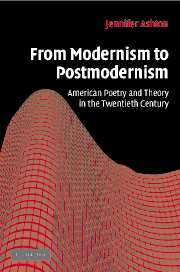Book contents
- Frontmatter
- Contents
- Acknowledgments
- Introduction: modernism's new literalism
- Chapter 1 Gertrude Stein for anyone
- Chapter 2 Making the rose red: Stein, proper names, and the critique of indeterminacy
- Chapter 3 Laura (Riding) Jackson and T=H=E N=E=W C=R=I=T=I=C=I=S=M
- Chapter 4 Modernism's old literalism: Pound, Williams, Zukofsky, and the objectivist critique of metaphor
- Chapter 5 Authorial inattention: Donald Davidson's literalism, Jorie Graham's Materialism, and cognitive science's embodied minds
- Notes
- Index
Chapter 3 - Laura (Riding) Jackson and T=H=E N=E=W C=R=I=T=I=C=I=S=M
Published online by Cambridge University Press: 22 September 2009
- Frontmatter
- Contents
- Acknowledgments
- Introduction: modernism's new literalism
- Chapter 1 Gertrude Stein for anyone
- Chapter 2 Making the rose red: Stein, proper names, and the critique of indeterminacy
- Chapter 3 Laura (Riding) Jackson and T=H=E N=E=W C=R=I=T=I=C=I=S=M
- Chapter 4 Modernism's old literalism: Pound, Williams, Zukofsky, and the objectivist critique of metaphor
- Chapter 5 Authorial inattention: Donald Davidson's literalism, Jorie Graham's Materialism, and cognitive science's embodied minds
- Notes
- Index
Summary
Peter Henry Emerson is significant to the early history of photography not only for the stunning photographs he produced during the 1880s but also for his impassioned campaign to grant photography the status of a fine art and to articulate the standards by which photographs could be evaluated as art. The standards depended above all on the photographer's ability to control what Emerson called the “values” (light and dark tones) of any photograph – his ability, that is, to alter them “at will.” But in 1890, when the chemists Ferdinand Hurter and Vero C. Driffield published an important finding from their experiments with photographic plates, the news effectively ended Emerson's artistic career. They discovered what would become known as the “characteristic curve” of all photographic images, which refers to the fact that while any given tone can be altered by process, the differential relation between tones in an image remains the same no matter the intensity or time of exposure, or density of the emulsion used (Newhall, P. H. Emerson, 89). Upon learning of this discovery Emerson immediately began to recant his previous arguments for the artistic merits of photography, initially by mailing a letter of renunciation to all of the magazine editors he knew, and next by issuing a pamphlet proclaiming the “Death of Naturalistic Photography” (92–93).
- Type
- Chapter
- Information
- From Modernism to PostmodernismAmerican Poetry and Theory in the Twentieth Century, pp. 95 - 118Publisher: Cambridge University PressPrint publication year: 2006



